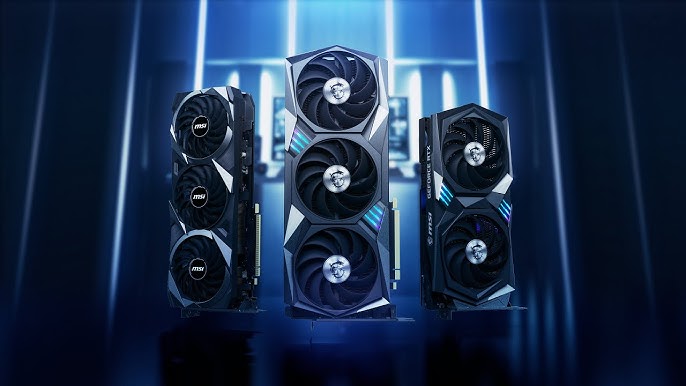Nvidia's shortages are limiting PC GPU market growth, looming tariffs also impacting sales
Nvidia owns 65% of the market, with AMD and Intel sharing 18% and 16%, respectively.

Over 78 million PC GPUs have been shipped in the last quarter of 2024, resulting in a 6.2% growth over the previous quarter. According to Jon Peddie Research, year-to-year GPU shipments across all platforms increased by 1% — broken down into a 2% increase in laptop GPU and a 3% decrease in desktop graphics card sales. The researchers predicted that the overall GPU market will shrink annually by 1% from 2024 to 2028, with only 15% of systems sporting a discrete GPU by 2030. The firm cited Nvidia shortages and looming tariffs as market pain points.
Dr. Jon Peddie, the president of the team behind this report, said that Nvidia’s shortage hindered the growth of GPU shipments. “Nvidia, with the largest market share, had difficulty meeting demand and, as a result of their size and influence, kept the GPU market from growing as much as it might have. Although that will lead them and AMD into Q1 with a strong backlog, the tariffs will offset further gains for most, if not all, of 2025.”
However, it seems that Nvidia still has trouble answering the demand for high-end (and even mid-range) GPUs, with almost all of its newly launched graphics cards — from the RTX 5090 all the way down to the RTX 5070 Ti — reportedly out-of-stock across retailers globally. Even Intel Arc B580 stock is hard to come by months after its release; we could only hope that the new AMD Radeon RX 9070 XT and non-XT graphics cards are available in large numbers everywhere.
The three major manufacturers — Nvidia, AMD, and Intel — share the GPU market, with Team Green owning 16% of the market, AMD has 18%, and Intel has 65% (these values include the integrated GPUs found inside CPUs). AMD and Intel slightly grew from the last quarter, with the two companies gaining 1% and 0.8% from Nvidia. This tracks with the developments in the GPU space late last year, as Nvidia warned of a shortage in the fourth quarter of 2024 as it wound down production of 40-series GPUs to prepare for the upcoming Blackwell GPUs. This was compounded by the arrival of the much-anticipated Intel Arc B580 GPU, which provided gamers with a graphics card that offered decent performance at an affordable price.
The report also made one surprising prediction: the contraction of the discrete GPU market. As we get more powerful graphics cards, one would expect more people to be hungry to get their hands on them. However, the increasing prices brought by paper launches, scalpers, and tariffs are probably turning off a lot of potential buyers.
Stay On the Cutting Edge: Get the Tom's Hardware Newsletter
Get Tom's Hardware's best news and in-depth reviews, straight to your inbox.

Jowi Morales is a tech enthusiast with years of experience working in the industry. He’s been writing with several tech publications since 2021, where he’s been interested in tech hardware and consumer electronics.
-
Heat_Fan89 I'd say it has the potential to decrease by a lot more than that. People will find a way either because they don't like Nvidia, are wise to their business model, don't want to pay that type of money and have decided to just stay put and play their games with older hardware.Reply
It is the people with money to spare that won't care either way. Nvidia probably knows that and doesn't care because they are focusing their business on AI.
This will have unintended consequences for the high end GPU market because developers will design their games around the lowest common denominator and they can easily get that information from EA app, Epic Games app and the Steam app. They have a very good idea what hardware most gamers are using. -
Barry_4 This may actually be a good thing for gaming. For too long advancements in gaming involve fancier graphics, while actual gameplay mechanics fall to the wayside. We need true innovation and hopefully graphics constraints will force developers to think of other ways to make games more fun.Reply -
doriandarkside This looks like a slight error in the article.Reply
"The three major manufacturers — Nvidia, AMD, and Intel — share the GPU market, with Team Green owning 16% of the market, AMD has 18%, and Intel has 65% (these values include the integrated GPUs found inside CPUs)." -
txfeinbergs Reply
No, it is correct. That is why he specifically put the explanation in parenthesis.doriandarkside said:This looks like a slight error in the article.
"The three major manufacturers — Nvidia, AMD, and Intel — share the GPU market, with Team Green owning 16% of the market, AMD has 18%, and Intel has 65% (these values include the integrated GPUs found inside CPUs)." -
Eximo Reply
Yep. Nvidia doesn't really sell anything integrated except the Tegra, and that isn't found in PCs, just automotive and the Switch.doriandarkside said:This looks like a slight error in the article.
"The three major manufacturers — Nvidia, AMD, and Intel — share the GPU market, with Team Green owning 16% of the market, AMD has 18%, and Intel has 65% (these values include the integrated GPUs found inside CPUs)."
If you flipped that to just discrete cards it would be more like 83% Nvidia. -
qwertymac93 Referencing integrated graphics statistics in an article specifically about discreet graphics sales and availability doesn't make a whole lot of sense. The entire premise of the article (Nvidia's dominant position limiting growth) is contradicted by quoting statistics where Nvidia is in last place. 😮💨Reply -
tomachas Controlled demand and supply, you mean. How on earth invest money in a new cards with all fake frame nonsense and worse incremental uplift. I am so glad AMD stepped up the game. I also wish demand for AI GPU-driven products decreases. At the moment, they hardly give big fat F O K about making cards that are excellent.Reply -
cloud7s7 The GPU market has been terrible since COVID and scalpers converged to ruin our lives. May everyone responsible face the worst sort of end.Reply -
YTPINK2718 Reply
At the start of the article "Nvidia owns 65% of the market, with AMD and Intel sharing 18% and 16%, respectively." is said and then "The three major manufacturers — Nvidia, AMD, and Intel — share the GPU market, with Team Green owning 16% of the market, AMD has 18%, and Intel has 65% (these values include the integrated GPUs found inside CPUs)." is said. It appears to me that either these statistics just appear very similar or that Intel and Nvidia got mixed up in one of these statistics. I am hoping that you could let me know which one is the case?txfeinbergs said:No, it is correct. That is why he specifically put the explanation in parenthesis.